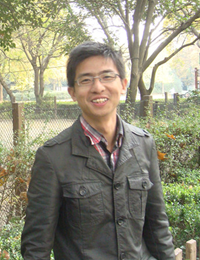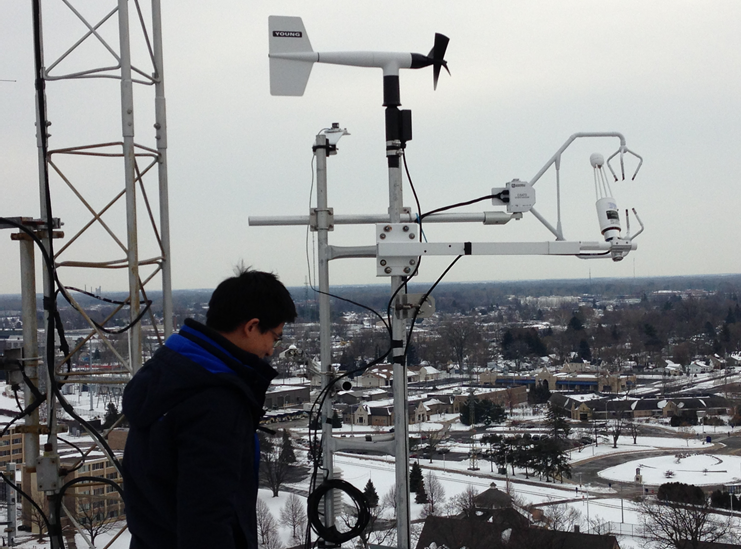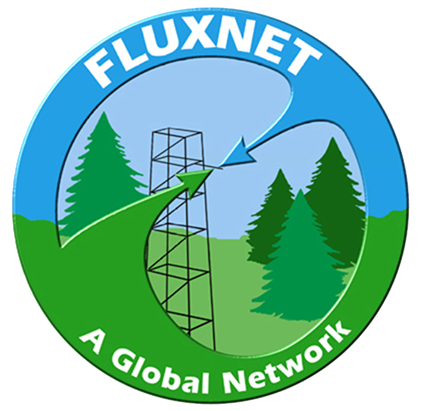 Zutao Ouyang is a postdoc at Stanford University Earth System Science Department. He currently scales up local observations of methane from rice paddies around the world under the USGS Powell Synthesis methane synthesis project. He aims to establish a career as a climate change, methane, and remote sensing scientist that uses data-driven methods and in-field experiments to answer complex research questions. We asked him a few questions on the latest effort by his team to create a global methane product and what it can mean for the scientific community at large.
Zutao Ouyang is a postdoc at Stanford University Earth System Science Department. He currently scales up local observations of methane from rice paddies around the world under the USGS Powell Synthesis methane synthesis project. He aims to establish a career as a climate change, methane, and remote sensing scientist that uses data-driven methods and in-field experiments to answer complex research questions. We asked him a few questions on the latest effort by his team to create a global methane product and what it can mean for the scientific community at large.
Tell us about the FLUXNET-CH4 synthesis activity effort. What is the goal and scope of your study?
Our team at Stanford is helping coordinate activities within the FLUXNET-CH4 synthesis activity. We’re collaborating withAmeriflux, Euroflux, AsiaFlux, and other regional networks to collect EC methane measurements in > 100 sites globally to produce a global scale methane emission products. My part particularly includes analyzing 8-10 flux towers from rice paddies. These activities fall under the scope of the methane budget put together by the Global Carbon Project, chaired by my supervisor Rob Jackson. Our goal is to improve the understanding of the carbon budget, globally.
Methane has recently become important because it’s concentration in the atmosphere is increasing fast, faster than CO2. Since 2007, it’s concentration has increased dramatically and we’re still uncertain what is causing it. This is important because methane is a more potent GHG than CO2. Some believe it’s from fossil fuels, for example leaks from oil/gas wells, transportation pipelines, and home appliances that use natural gas. Others believe it is caused by natural resources from wetlands or fires, the increase of livestock or rice paddies.
So, we’re not clear about where this increase in methane came from. Therefore, we’re running two up-scaling projects in our lab. The first is on global freshwater wetland emissions. We want clues from wetland methane emissions, such as how much it contributes to the methane emission in the atmosphere. In the second project, I’m leading a focus on rice paddies that just started this summer. Our final goal is a global product, but we may start with a regional product in some Asian countries where most of the rice is grown. Do this this, we’ll create a data-driven product applying AI on observation-based measurements.
What is the exciting contribution of your work for other scientists?
Currently, we don’t have a good enough spatial distribution or map of methane from wetlands or rice paddies. These are necessary, as they are very important sources of methane emissions. More importantly, methane emission derived by Earth system modeling needs a good benchmark for cross validation and comparison. Our product will be data-driven from long-term observations and will be useful in many applications, including benchmarking and parametrizing process-based models.
Why rice paddies?
While methane comes from industry and natural wetlands (e.g., inundated land), rice paddies are possibly the biggest of man-made methane sources. The rice paddies are flooded to create an inundated environment similar to natural wetlands. Therefore, lots of methane is emitted.
On the other hand, we can’t stop global rice paddies because we need to rice to feed people. However, we can come out with good management practices to reduce methane emissions without compromising the rice yield. So, it’s important to understand the trade-offs between the rice production and methane emission, as well as how to improve the situation.
How do you plan to scale up methane from rice paddies?
To create an scaled-up product of the methane emissions for global rice paddies, we use machine learning algorithms trained by eddy covariance and remote sensing data. We currently have six EC towers that measure methane emissions from rice paddies. The study area is global, all the rice paddies in the world, but we don’t have a good global rice paddy map yet for up-scaling. We also have a limited size of methane observation samples for training ML algorithms. We have a site from Korea, Japan, Italy and three sites from the United States; and we hope to get another more from China, India and the Philippines. So, we will probably start with a regional product in a Asian country, such as India or China.
Observed methane acts as our response variables and we combine meteorological variables, and remote sensing observation as our predictors because they are gridded data and globally available. For the machine learning, our first test was random forest, then gradient boosting trees and then neural networks, and finally maybe Gaussian processes. We will compare these to see which is best.
What other methane projects are you involved in, aside from the scale up effort?
Another project I’m helping with is led by our PhD student Eric Lebel to study leaks of methane from gas appliances in California homes. From drilling a well to end use, natural gas escapes. People are using gas water heaters and stoves, and we’re also curious about what proportion of the delivered gas is emitted without combustion.
Methane leaks from stoves
For stove tops, there are a few things we have to measure. We hypothesize that an important contributor in total stove top methane emission will come from when you are turning a burner on or off because there will be a pulse of methane emission that is not completely combusted. For this, we built a chamber to put on top of the stove. We place it on top of the stove, turn a gas burner on and off immediately. Then, we measure the methane concentration increase in the chamber volume to compute the amount of emitted methane.
Second, when the stove is running there is also some leaking. For this, we use a big fan (duct blaster) to pull all the exhaust from the burner through a long tube, where we will measure the rate of the flow and the concentration inside the flow to compute methane emission rate.
Even when a gas appliance is off, there are still leaks, and we use the same method as when it is on to measure the leaks. Our next step is to measure the usage length/pattern of stoves for up-scaling.
Methane leaks for water heaters
We also measure the water heaters in people’s homes. One PhD student Eric Lebel is leading this as well and has already measured > 15 tankless and >10 storage water heaters. Similar to stoves, we measure the steady emission as well as the pulse emission when it is turned on or off. We install temperature data loggers on water heaters to measure how many times the temperature changes. This helps us to infer how many times it is turned on and off and how long it runs each day. One major finding so far is that while tankless water heaters are more efficient in burning methane while running, they are also turning on and off more often. Therefore, they are a greater emitter of methane than the water heater with storage.
Future projects in methane
A future project I will be involved is finding “super methane emitters” in San Joaquin Valley, where we will not only measure home appliances, but also monitor other point-source emitters including gas/oil wells, gas stations, diaries, and landfills etc.
Have you participated with Young-Scientist Network/Early-Career Network?
I’m just getting back into the flux community, particularly methane, after a few years of studying land use and land cover change. I joined the email list many years ago and I follow interesting topic posts such as data sharing or collaboration request. Sometimes I’ll explore the data from FLUXNET to see if we can make an interesting project.
Online workshops and webinars would be great to have. It could be that young-scientists or senior scientists talk about their research or future research directions for the field, like a panel, such as CO2 or methane.
Who has positively influenced you as a scientist?
My past advisor Dr. Jiquan Chen and current advisor Dr. Rob Jackson. From Dr. Chen, I learned professionalism. He encouraged me to be rigorous about the details and he also taught me to think more about scientific questions rather than pure methods. With Dr. Jackson, I admire that he not only thinks big but also knows the path to the big questions. He follows up everyone’s research and he can give you specific and useful suggestions or resources. He is super busy, but he’s happy to spend a lot of time with students and postdocs as well as his way of mentoring and supervision.
Do you believe there are important skills that early-career scientists should be incorporating?
Right now, you need good skills in statistics and machine learning. Recently, there are more applications of AI and machine learning for Earth science, utilizing big data. There are exciting opportunities to partner with computer science researchers who are designing and programming these machine learning algorithms.
Personal website: https://profiles.stanford.edu/zutao-yang
Research gate: https://www.researchgate.net/profile/Zutao_Ouyang

